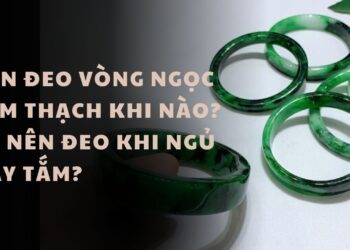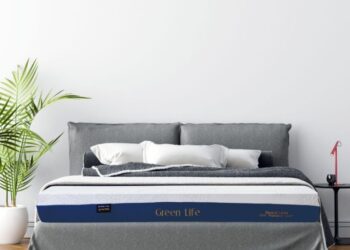The iPhone SE (2020) remains a great phone for the money even though it’s just been replaced. The iPhone SE (2022) doesn’t change much if all you’re looking for is the iPhone experience for as cheap as possible.
The 2020 model’s older chip is less powerful and less efficient, plus doesn’t offer features like 5G compatibility or Photographic Styles. You also don’t get the new tougher front and back glass on this version. However, it’s still got what you need if you’re not bothered about the latest features.
You may find it difficult to find this model in stock these days, and given it’ll likely have a shorter life of software support ahead of it than the new SE, you may be better off avoiding it. But the iPhone SE 2020 remains a good phone even with its successor now here.
- The best iPhone SE deals now
- iPhone SE vs iPhone XR: Which affordable iPhone wins?
- Best unlocked iPhones
I just wish Apple trimmed the bezels on this phone and added a night mode for the camera. If you’re wiling to spend more, the $699 iPhone 13 mini is a good alternative with a larger 5.4-inch display and 5G.
Regardless, you can’t deny that the iPhone SE 2020 remains one of the best phones you can buy for the money.
iPhone SE 2020 price and release date
The iPhone SE costs $399/£419 (opens in new tab), the same price it debuted at in April 2020. The $399 model features 64GB of storage for $399, but you can upgrade to the 128GB version for $449/£469 and to 256GB for $549/£569.
Trade in your old device when you buy the iPhone SE, and you could get as much as $120 off your new phone, lowering the price to $279. You can also check out the best iPhone SE deals to see if there are additional savings available.
The iPhone SE is available through all of the major carriers, including AT&T (opens in new tab), Sprint (opens in new tab), T-Mobile (opens in new tab) and Verizon (opens in new tab), as well as other carriers including Xfinity Mobile and Visible (opens in new tab).
iPhone SE 2020 review: Design and colors
I generally like the iPhone SE’s design — with one exception. On the plus side, it’s a very well made handset with the same sturdy glass-and-aluminum design of the iPhone 8. There are three color options for the iPhone SE: black, white and (Product)Red. I like how the aluminum band is color matched with the back of the device.
I tried out the black model, which looks and feels sleek but did pick up smudges despite the oleophobic coating. You’ll probably want to opt for white if you want to hide fingerprints.
Another plus to the iPhone SE: The whole design is almost comically compact compared to the iPhone 11 Pro Max or the new iPhone 12 Pro Max. It’s the difference between barely noticing a phone is in your front pocket and having it bulge out. I also didn’t feel any discomfort when gaming for over 30 minutes at a time; I can’t say that about my iPhone 11 Pro Max.
The iPhone SE measures 5.45 x 2.65 x 0.29 inches and weighs 5.22 ounces, which is smaller and narrower than the Google Pixel 4a but about the same weight. The Pixel 3a has a much bigger 5.81-inch edge-to-edge display with a hole punch cutout. However, unlike Google’s budget phone, the iPhone SE 2020 has IP67 water resistance. That means it can be submerged in 1 meter of weather for up to 30 minutes. You also shouldn’t have to worry about coffee or soda spills with this phone.
Unfortunately, the bezels around the iPhone SE’s screen look big and dated for a 2020 smartphone. I kept trying to zoom in on videos to no avail. I would have liked Apple to fit a larger display in the same size chassis.
Another issue is that Haptic touch does not work on the lock screen of the iPhone SE for some reason. Unlike other iPhones, you can’t long press on notifications to expand them on the lock screen.
iPhone SE 2020 review: Touch ID
Although Apple has offered Face ID on all of its newer phones for the past couple of years, the new iPhone SE 2020 uses a Touch ID sensor underneath the display for unlocking the device. This same sensor can be used for authorizing App Store downloads, Apple Pay and entering passwords.
Just like I remembered, the combo Touch ID/home button worked well, and you can choose the amount of haptic feedback you prefer when you press down. The Touch ID button has a very important — and unexpected — benefit right now as many are being ordered to wear face masks in public. You can still easily unlock your iPhone SE without having to take off your mask. Face ID won’t work with masks.
iPhone SE 2020 review: Display
A 4.7-inch screen on a modern-day phone may seem antiquated, but those shopping for one of the best small phones won’t be disappointed in this panel.
I enjoyed checking out the Wonder Woman 1984 trailer on YouTube on the iPhone SE 2020’s Retina Display. The superhero’s gleaming red, blue and gold suit popped as she deflected bullets with her silver bracelet. The iPhone SE’s screen also did a good job rendering finer details in a Tiger King scene: I could make out individual whiskers on the majestic animal’s face.
Just don’t expect a full HD picture. The iPhone SE’s display resolution is just 1334 x 750 pixels. We would prefer to see a 1080p display but it’s not too bad of a trade-off.
The iPhone SE’s screen is bright, as it’s rated for 625 nits and scored an even higher 653 nits in our testing. It’s just a bit dimmer than the Pixel 4a’s 681 nits.
I didn’t have any issues viewing the screen outdoors when surfing the web or taking photos. The panel also supports True Tone, which means it can automatically adjust the screen’s color temperature based on the ambient lighting conditions.
Based on our tests, the iPhone SE’s display reproduces 111.2% of the sRGB color gamut, which just barely beats the 105.8% from the Pixel 4a’s OLED panel. The iPhone SE delivers accurate colors, too, achieving a Delta-E score of 0.2; a score of zero is perfect. The Pixel 4a’s screen scored 0.29.
iPhone SE 2020 review: Cameras
The iPhone SE 2020’s camera is so good that you’d be hard pressed to tell the difference between it and the iPhone 11 in many cases. The one exception is Night mode, which the iPhone SE simply does not have.
Like the iPhone 8 before it, the iPhone SE features a single 12-megapixel rear camera and a 7MP front camera. You don’t get a ultra-wide angle lens like the iPhone 11 or a telephoto lens with optical zoom like the iPhone 12 Pro models. But the iPhone SE’s A13 Bionic chip boosts its camera performance in several ways.
For instance, you can take portraits using both the back and front camera on the iPhone SE, complete with Portrait Lighting effects and the ability to control the depth of field. The iPhone SE also benefits from Smart HDR for bringing out the highlights in faces.
I was pleasantly surprised by the level of detail in this iPhone SE photo of a man-made pond. You can make out the drops of water in the waterfall in the distance, and the greenery pops around the rock formations. The iPhone SE also did a great job capturing the black-and-white and orange-and-white fish in that pond, as well as the blue-green water.
The iPhone SE held its own against the Pixel 3a in this photo of light pink cherry blossom flowers. The iPhone SE’s shot is warmer and brighter, but the Pixel 3a’s image is a bit more detailed and has more contrast.
I also give the nod to the iPhone SE here with this portrait. My skin tone looks more natural and the bokeh effect looks very convincing. The Pixel’s manages to take a chunk out of the right side of my head. There is one small drawback to the iPhone SE when taking portraits, though; you have to get considerably closer to your subject than you do with the iPhone 11 Pro because the iPhone SE doesn’t have a telephoto lens. (You will be within 6 feet, which is not social-distancing friendly.)
The iPhone SE pulled ahead in this photo of an Aperol Sprtiz cocktail. The overall image just looks brighter and more appetizing. I also like how the iPhone SE blurs out the background. The only strike against the iPhone here is that the tile looks more yellow than white; the Pixel 3a got that right.
The one camera weakness for the iPhone SE is the lack of a Night Mode. In this photo taken outside at night, the Pixel 3a is able to render the trees in the foreground, the car in the street and the house in the background. You can barely make out anything in the iPhone SE’s shot. I don’t know if the iPhone SE could pull off a Night mode with a software upgrade, but it would be great to see Apple add the feature.
If you’re wondering how the iPhone SE’s cameras measure up to a more recent device than the Pixel 3a, check out our Google Pixel 4a vs. iPhone SE face-off for a camera comparison to Google’s current budget offering.
On the video front, the iPhone SE can record 4K video at up to 60 fps, and you can enjoy extended dynamic range if you drop down the frame rate to 30 fps. This brings out more details in the shadows along with better highlights.
iPhone SE 2020 review: Performance
While Android phone makers outfit their budget phones with weaker processors, the iPhone SE packs the same A13 Bionic chip as the iPhone 11 and iPhone 11 Pro. This means you’ll enjoy the same fast and responsive performance.
For example, the iPhone SE delivered silky smooth gameplay while I sped along in Sayonara Wild Hearts and tried to stay on the track in Super Impossible Road. The graphics were not as crisp due to the iPhone SE’s lower-res display, but the overall action was just as swift and enjoyable. Loading apps and switching between apps was also lag-free.
Scrolling on the iPhone SE feels slower than on phones with a 90Hz or 120Hz refresh rate, but I don’t expect that perk on a sub-$400 phone.
On Geekbench 5, which measures overall performance, the iPhone SE scored 3,226 on the multi-core test and 1,337 on the single-core portion. Those numbers are comparable to what the iPhone 11 (3,251 and 1,331) turned in. They also beat the Galaxy S20, which scored 3,147 and 867 and costs $600 more.
The iPhone SE performed very well on real-world performance tests, too. It took the phone just 43 seconds to transcode a 4K video to 1080p after applying a few edits in the Adobe Premiere Rush app. That result actually beats the pricier Samsung Galaxy S20, which took 1 minute and 15 seconds.
Since our testing iPhone SE review, Apple has released the iPhone 12 family, with four models powered by the faster A14 Bionic chip. Those phones outperform the iPhone SE, but make no mistake — the A13 inside Apple’s cheapest iPhone still delivers a punch that tops many other devices.
iPhone SE 2020 review: Battery life and charging
The iPhone SE is rated for less battery life than the the iPhone 11, so you shouldn’t expect the longest endurance. For instance, Apple says that the iPhone SE delivers 13 hours of video playback, versus 17 hours for the iPhone 11.
On the Tom’s Guide Battery Test, which involves continuous web surfing over 4G LTE, the iPhone SE 2020 averaged 9 hours and 18 minutes. That’s well below the endurance of the iPhone 11 (11:16), iPhone 11 Pro (10:24) and iPhone 11 Pro Max (11:54). The iPhone SE did, however, best the Pixel 4a, which scored a mere 8:55.
In my anecdotal testing, I found that the iPhone SE does have less staying power than my iPhone 11 Pro Max, as it has a smaller battery. For example, after unplugging the iPhone SE at 7 am and using it for web surfing, playing games, taking photos and more throughout the day, I had 20% juice left at 8 pm. That’s not bad, but my iPhone 11 Pro Max still had close to 40% power.
Unfortunately, the iPhone SE comes with Apple’s standard 5-watt Lightning charger. (The bright side? Apple stopped including chargers with last fall’s iPhone 12 releases.) And with that you can expect to get to just 29% power in 30 minutes, based on our testing. If you want to be able to juice this phone to 50% in 30 minutes, you’re going to have to pay extra for an 18W charger from Apple. It’s $29 for the power brick and another $19 for the USB C to Lightning cable.
If you want to go wireless, the iPhone SE supports 7.5W wireless charging and supports the Qi standard. Check out all the best wireless chargers to pair with this phone.
iPhone SE vs Google Pixel 4a
Released after the iPhone SE, the Google Pixel 4a is a very good alternative to Apple’s phone. At $349, it costs $50 less than the iPhone SE. And for that price you get a bigger 5.8-inch OLED display, much slimmer bezels and a Night mode for the camera, which the iPhone SE lacks. The Pixel 4a also offers double the storage at 128GB vs 64GB for the iPhone.
On the other hand, the Snapdragon 730 processor inside the Pixel 4a is slower than Apple’s A13 Bionic chip. Plus, the iPhone SE has a water resistant design, as well as wireless charging. So it really comes down to whether you prefer iOS or Android.
iPhone SE 2020 review: Verdict
The iPhone SE 2020 is the affordable iPhone to beat, and the one of the best cheap phones you can get. It’s the closest thing to future-proof you’ll find under $400, offering the fastest performance around, very good cameras, wireless charging and a premium design that outclasses cheap Android phones.
Yes, I wish the bezels were smaller and that Apple included Night mode for the camera — and you don’t get 5G connectivity — but overall it’s hard to complain too much at this price. A 5G-capable iPhone SE 3 could be on the horizon, but it likely won’t arrive until 2022.
The iPhone XR is a tempting alternative to the iPhone SE as it now costs just $499. For that money you bet a bigger display and bigger battery but a slower CPU and less advanced cameras. If you prefer a smaller phone, however, this handset will not disappoint. Overall, the iPhone SE is the one of the best phones for those on a budget.
iPhone SE review cheat sheet: Reasons to buy and skip
Reasons to buy the iPhone SE 2020
- A13 Bionic processor: The A13 chip is the fastest in a phone and offers smooth performance, whether you’re juggling multiple apps, playing games or using AR apps.
- Solid cameras: That A13 chip also boosts the photography powers of the iPhone SE, as you get Portrait mode for the front and rear shooters, Smart HDR for better highlights and extended dynamic range in 4K video.
- Premium design: While a lot of premium phones have plastic designs, the iPhone SE is made of glass and metal and is also IP67 water resistant.
- Bright and colorful display: It’s not full HD, but the 4.7-inch Retina Display on the iPhone SE is easy to see outdoors and provides a vibrant picture.
- Easy to use with one hand: Fans of small phones will appreciate how compact the iPhone SE is. And the Touch ID button lets you easily unlock the device.
Reasons to skip the iPhone SE 2020
- Big bezels: The iPhone SE would be even more attractive if Apple were able to deliver something closer to a full-screen design.
- No Night mode for the camera: The iPhone SE lacks the Night Mode camera feature on the iPhone 11 and iPhone 11 Pro, not to mention every iPhone 12 model. So you’ll have to rely on the flash in really dim conditions.
- No 5G: Apple didn’t add 5G to its phones until the iPhone 12 family last fall. 5G networks are expanding, and you’ll miss out on the faster download speeds with this iPhone SE.
- More: iPhone 12 mini vs. iPhone SE






